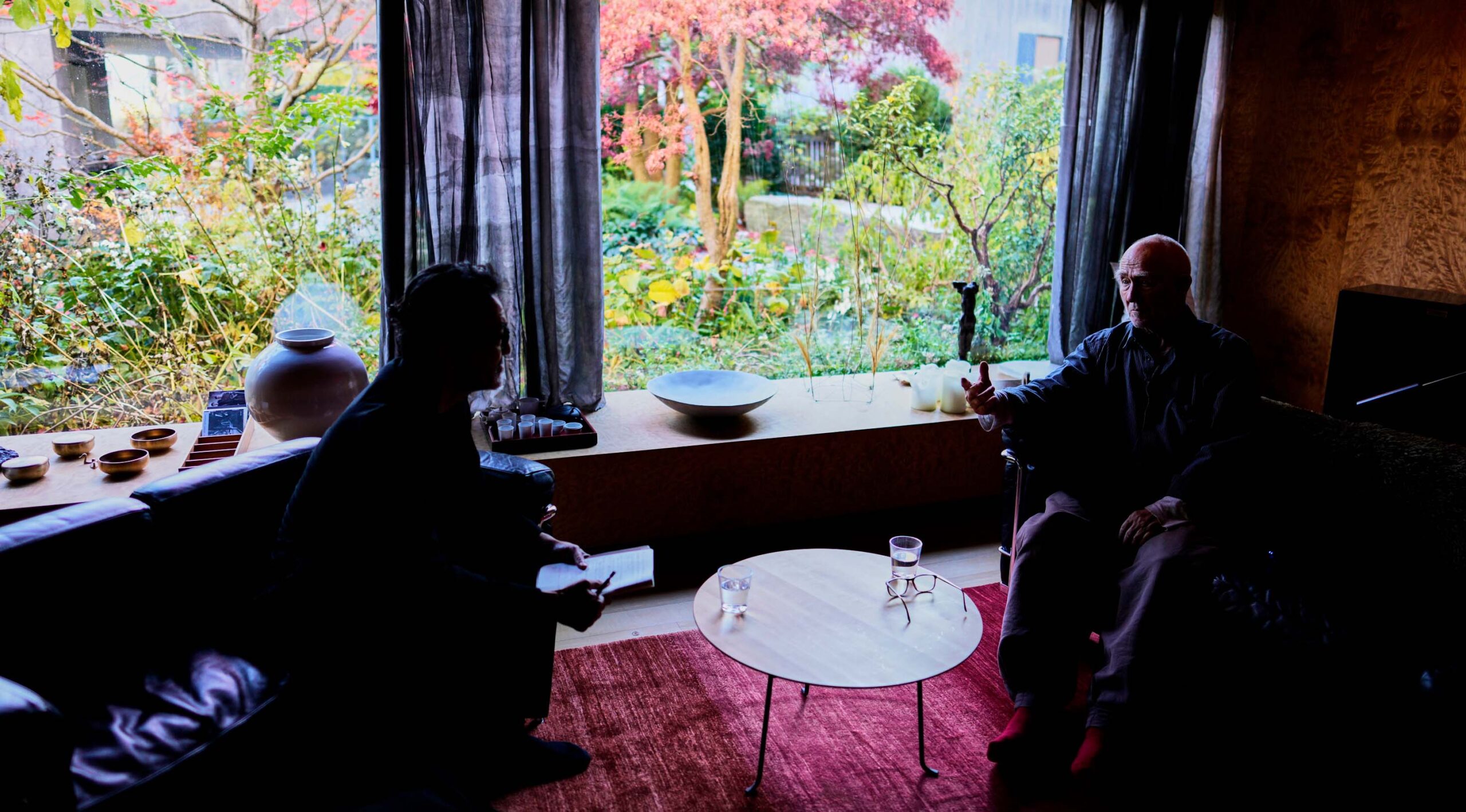
Architecture and furniture
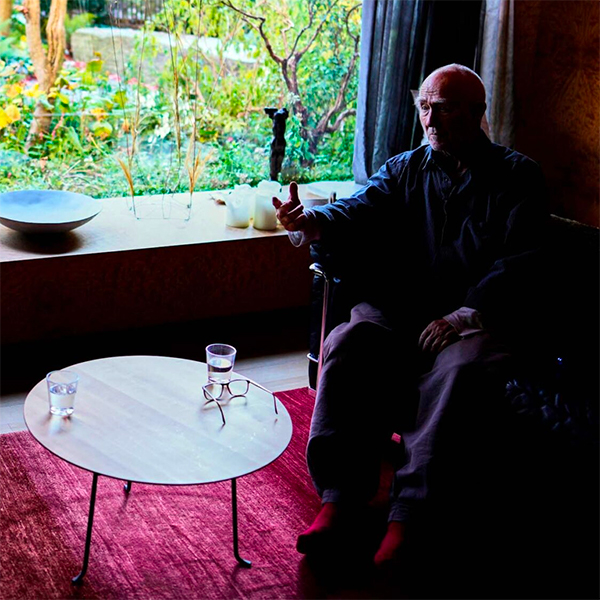
Architecture and furniture
— I’ve heard when you were young, you studied woodcrafts. Also that your father was a furniture maker. As a furniture maker myself, I would love to know. What did you do back then?
Zumthor Switzerland has this system of apprenticeship. There’s also a bit in Austria and Germany, but in Switzerland, it’s a federal degree regarding all the trades that you do with your hand. You can take an apprenticeship, go to school, and then after three or four years, you get a paper that you are a trained plumber, a trained roof maker, and so on. This system is very good, and I like this. But I did it because of my father. He wanted me to do this, to take over his shop. So I learned the craft.
— I imagine back then, maybe 60 years ago, it was not the same as today. What kind of things were you using to make furniture?
Zumthor The exams, they were still about old type of furniture making. Every day, furniture making was a lot about using plywood and using particle board – a lot of boring works. Because you had to do many things, it is hard to recall. But now, I don’t know, it’s even more technical and you have to look out for so much. But it still exists! Here, it still exists in this area nearby, with people who can make something beautiful with their hands, and care about this concept of custom-made. In the United States, as you know, it is already like a frantic search. You would spend for more than for a year or so, that is if you could find somebody who can work with his or her hands and do something beautiful on a higher level. It has become rare. Here, it still exists. For instance, this guy here at the entrance door, he’s a furniture maker, a woodworker. He is good. He can do anything.
— What kind of products were you making at that time?
Zumthor There were all kinds of commissions that my father would get. It was a time when the local carpenter would work for the local people. It’s starting to go to an end, but here, things were sort of custom-made. You could go to him and say, “I want that in the living room” or “I want something built-in here” or so. That’s the kind of work.
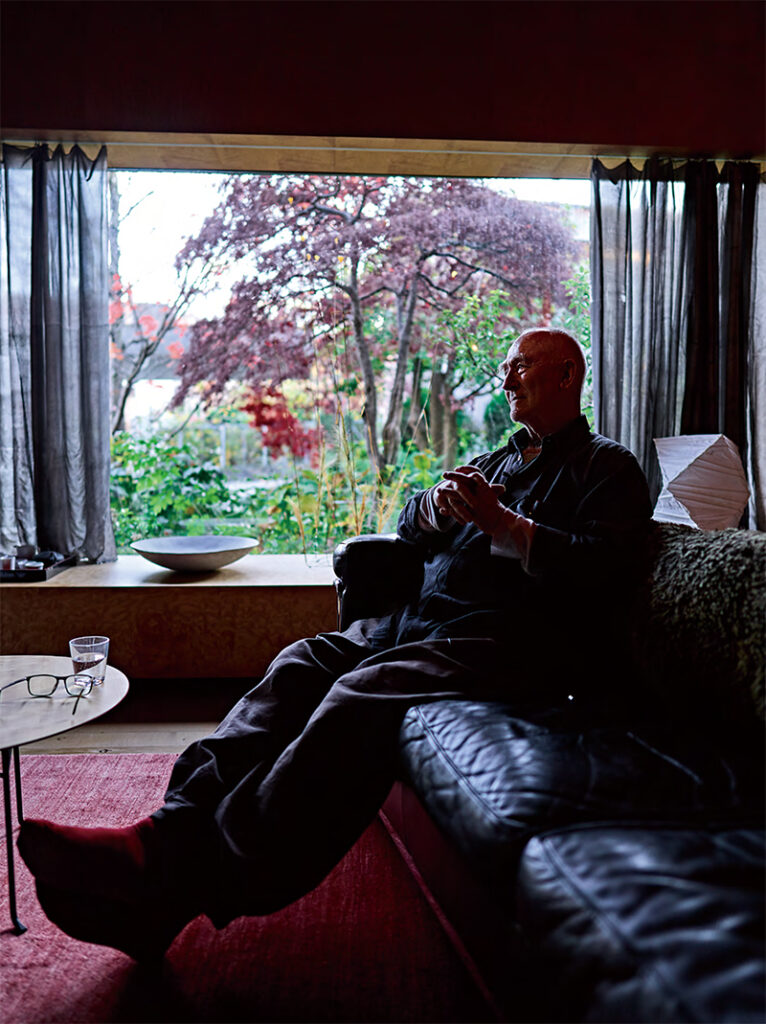
— We have an impression that you always use wood for your projects and…
Zumthor Wow, you’re wrong! In Kunsthaus Bregenz there is not one piece of wood, in Therme Vals, there is no wood. Except for this thing, everything is wood. So there! It’s not true.
— So you always pay attention to the materials. What do the materials mean to you?
Zumthor The materials come from the earth, from our planet, and there are a lot of them. They all somehow derived from this world. And then you put together a house, you can create a beautiful harmony by choosing the right things. This is textile, this is plants, this is from animals, then steel, wood, glass, and stone. This is the task of architecture. Architecture is not virtual. My architecture is not virtual. My architecture is real.
— I see. Now I want to ask you about the furniture. When you design furniture, how do you create your ideas?
Zumthor I don’t think I have to create ideas. It’s more about what would be nice to have. And if the market already offers something nice to have, why not use it? But sometimes there is nothing on the market, like a peppermill. I didn’t find a good peppermill, so I said let’s do one. It’s more like candles for the house, something special, that I need for the house. Then I decide this for the house. Because I know what I am missing! I know the tool. It’s the most simple thing but I am missing it.
— Thank you for sharing that! How about the relationship between furniture and human lives?
Zumthor It belongs to the series of objects and things, which every human being collects in his life and lives with it. I have a nice collection of things, small things, bigger things. And they are sort of like my friends, they are around me. And I can see this and lots of people have this too. So, I think it’s very human to have things. Sometimes, they come from the older time. They connect me to the life of ancestors, or people I don’t know, but they were part of their lives. It’s very nice that things are passed on, and I also like to do furniture which is worthy of being passed on.
— I recall it was when we were making the second prototype of the “working table”, we prepared three samples of the corner of the table for you. You touched the edges and explained to us the difference, and ended up selecting this one. We did produce the first prototype according to your design, but you decided on a different one. Why was that?
Zumthor You know the sharp edges of things, they had started in the 60s with modernistic furniture. Then they stayed with minimalism. But when I can hold them, sometimes the edges are too hard for me. But here, the edges are a little bit more, let’s say, soft. It also has time, it also has a bit of style. I guess it’s Time & Style.
— Thank you. How about your design? Is it also changing with time, or more specifically your age?
Zumthor I don’t have a style or a form. I think I have an attitude toward things. And they are very much connected to myself and what happens around me. At the moment, the world is getting extremely artificial. There are all these virtual tools around us like the internet, and we seem to be connected to everything at the same time. But my observation about people is that we are less connected. We have just a part of all the information, but it’s all completely flat. It doesn’t go deep, and it keeps us racing, racing, racing all the time.
Yesterday, I was reading something from a guy who died a couple of years ago. I think he was a philosopher, a German guy, Roger Willemsen, a very nice guy. So he says, in these exact words, “We were connected to life and to our work, and we could be unhappy, we could be unsure. And though it could be difficult, all these things came out of, as suggested before, out of missing something.” Now, everything is so efficient. Everything is like: this you can say, this you should not say, this is correct, this is not correct.
Now coming back to architecture, I think my architecture gets more and more… rough! The opposite of slick.
— Yesterday, we visited St. Benedikt Chapel,
Zumthor That’s old work.
— Yes, and I felt the work was very precise and sensitive, like functional pieces. I also felt as if we were on a big boat, and the round wooden pieces outside the chapel were the fish. That was my impression.
Zumthor That’s good you went there. So, you don’t belong to the people who say, “why is your architecture always square and straight?” I’d say, that’s not true.
— No, they aren’t.
Zumthor Or, why is your architecture always in wood? Not true!
— No, they weren’t true!
Zumthor This is, if you ever go, I have made another chapel, 20 or 25 years later than the St. Benedikt Chapel. This is more existential. It’s nothing like the chapel I made up there. Back then, I promised to the priest. I told him, listen, I am not into church anymore. I went out of the Catholic Church. But I could make you a chapel with the consciousness of a 17-year-old boy who loves sitting in a church. I would like to be there, and that’s good enough. I guess that’s what I did. It’s a warmhearted, sentimental, and romantic piece. That’s how I felt then, as a boy, for the church. I didn’t believe in authority. This is not an authoritarian chapel. It’s more of a soft piece. And the chapel I did in Germany much later is more essential and more… full of questions. There is a nice essay by a Hungarian philosopher. Do you know this one?
— No, I don’t.
Zumthor László Földényi, he is a specialist on melancholia. And, he writes this essay on the chapel of Bruder Klaus, and what he thought about it. Then later he writes, “Years later I was walking in Paris, then I saw a display window and saw an object, which I liked a lot. Then I went inside and bought it even though it was expensive. Later, I used it,” and here he is talking about this peppermill. He said he liked it, and “later turned it around and then I read: Peter Zumthor.” And then he knows, “it’s the same person as this chapel!” He saw the chapel, he wrote about it, later he saw the peppermill, he bought it, and then later, he turned it around and read: Peter Zumthor.
— When I met you probably three years ago, in the first impression you reminded me of a Japanese monk. That was just my impression. And when I see your architecture, I sometimes feel there is something Japanese about it, and that there is affinity.
Zumthor That sounds like a compliment.
— Yes, it is. Because we make furniture, I do feel there is a certain similarity or relevancy. Producing your furniture was very difficult, but it was such a great pleasure to work together again. We felt that you have a clear understanding of the material, and also how to use them.
Zumthor I grew up in this family of craftsmen. So, already as a boy, I could use my father’s workshop. We didn’t have so much money but had lots of children, so I made all my toys and games by myself. And my father let me use all his tools and all his material. That’s how it worked. I think it turned out quite okay.

― 若い頃、木工芸を習っていたそうですね。また、お父様は家具職人だったそうですね。私も家具づくりに関わっているのですが、当時はどのような仕事をされていたのでしょうか?
ズントー スイスには徒弟制度があります。オーストリアやドイツにもあるのですが、スイスでは徒弟制度を利用して学校に通い、3~4年後に国の資格を取ることができます。例えば、配管工や屋根職人になるための訓練があります。とても優れた良い制度だと思います。私が徒弟制度を使ったのは、父の希望でした。父が私に家業を継がせたいと望んでいたからです。
― 60年くらい前の時代だと思いますが、今とは違っていますよね。家具を作るのに、どのような道具を使っていたのでしょうか?
ズントー まだ古いタイプの家具づくりでした。毎日、合板やパーティクルボードを使って家具を作り続けて――いわゆるつまらない作業でした。とにかくやらなければいけない作業が多かったんです。今はもっと技術的に進歩していて、さらに色々と見なければならないこともありますが…この地域にはまだ残っているんです。手仕事で美しいものを作れる人、それを大切にする人が近くにいます。ご存知のように、アメリカでは今や、手仕事で美しいものやレベルの高いものを作ることができる人を見つけるためには、必死に探しまわらなければいけません。1年以上はかかるでしょう。希少になってしまったんですね。しかし、ここでは違います。例えば、入口のドアのところにいる彼は家具職人であり、木工職人です。彼は優秀だし、どんなものでも作ることができるんです。
― 当時はどのような製品を作っていたのですか?
ズントー 当時、父にはいろいろな依頼がありました。地元の大工さんが地元の人たちのために働いていた時代です。だんだん廃れてしまいましたが、オーダーメイドで「これがリビングに欲しい」とか「ここに何か作り付けの家具が欲しい」とか、そういう依頼がありました。それに応える仕事でした。
― あなたの作品には木が多く使われている印象がありますが…
ズントー いいえ、そんなことはありませんよ。ブレゲンツ美術館では木を1枚も使っていませんし、テルメ・ヴァルスにも使っていません。ただ全て木材でできているものもありますが。
― そうでしたね。いつも素材に細心の注意を払っていらっしゃいますが、あなたにとって素材とは何でしょうか?
ズントー 素材は地球が与えてくれるものです。素材とは、いわばこの世界から生まれたもので、その素材を使って家を建てることで、美しい調和を生み出すことができます。これはテキスタイルで、これは植物、これは動物でできている、あとは、スチール、木、ガラス、そして石といった具合ですね。これが建築の仕事です。建築はバーチャルなものではありません。少なくとも私の建築はバーチャルではありません。私の建築は実在するものです。
― なるほど。続いて、家具についてお伺いします。家具をデザインするとき、どのようにアイデアを生み出しているのでしょうか?
ズントー アイデアは必要ないと思います。それよりも、あったらいいな、と思うものがあればいいんです。もし市場にすでに何かいいものがあるのなら、それを使えばいい。でもペッパーミルのように、市場に良いものがない場合もあります。家に飾るキャンドルとか、何か特別なものですね。家のために必要なものです。その家にふさわしいものがないなら自分で作ろうと思います。何が足りないのか、何をすればいいのかを分かっているからです。往々にしてとてもシンプルなものですが、それが足りていないのです。
― なるほど、素晴らしいですね。家具と人の暮らしとの関わりについてはいかがでしょうか?
ズントー 人間なら誰もが人生の中で集め、それとともに生きているモノやコトがたくさんあります。私は、小さなものから大きなものまで、素敵なコレクションを持っています。そして、これは私の友人のようなもので、彼らは私の身の回りにいます。多くの人がこういうものを持っています。だから、モノを持つことはとても人間らしいことだと思います。時にはそれが古い時代のものであったりして、先祖だったり、あるいは知らない人だったりと繋げてくれるようなことがありますが、どちらにせよそのモノは彼らの生活の一部だったんです。そんな風に受け継がれていくことはとても素敵なことだと思いますし、私も受け継がれるのに値するような家具を作りたいと思います。
― たしか”working table”の2回目の試作をしたときだったと思いますが、私たちはテーブルのエッジのサンプルを3つ用意しました。あなたはそのエッジを触りながらそれぞれの違いを説明してくださり、これを選びました。1回目の試作品はあなたの図面通りに製作したのですが、最終的に初めのデザインとは異なるエッジに決めましたね。それはなぜですか?
ズントー 鋭いエッジは60年代にモダニズムとともに登場しました。それからミニマリズムにも受け継がれましたが、手に取ってみると、私にはエッジが硬すぎると感じることがあります。選んだエッジは少し柔らかめです。時間の経過があり、スタイルもあります。まさに「タイムアンドスタイル」のようなものですね。
― ありがとうございます。あなたのデザインと年齢の変化についてはどうでしょう?年齢とともに変化していますか?
ズントー 私にはスタイルや形はありません。私は物事に対する姿勢を持っているだけです。そしてそれは、私の周りで起こっていることと密接に関係しています。今、世界は非常に人工的になりつつあります。私たちの周りには、インターネットのようなバーチャルなツールがあり、私たちはあらゆるものと繋がっているように見えますが、私が多くの人々を観察した限りでは、逆に繋がりは希薄になってきています。私たちは膨大な情報の一部にしか過ぎず、すべては完全にフラットなものです。そのため、私たちを常に駆り立て続けています。
昨日、ある人の本を読んでいました。数年前に亡くなったロジャー・ヴィレムセンというドイツ人の哲学者です。とてもいい人でした。彼はまさにこう言っています。「私たちはかつて人生や仕事と繋がっており、不幸になることもあったし、不安になることもあった。いろいろな問題を抱えることがあったとしても、これらのことはすべて、先に述べたように、何かが欠けていることから生じたものだ」と。今は、すべてが効率的です。これは言ってもいい、これは言うべきでない、これは正しい、これは正しくない、とはっきりしています。
さて、建築の話に戻りますが、私の建築はますますラフになり、洗練とは正反対になりつつあると思います。
― 昨日、私たちは聖ベネディクト教会を訪ねました。
ズントー 昔の作品ですね。
― あなたのデザインはすべてとても正確で、とても繊細で、ひとつの機能的なピースのようでした。まるで大きな船に乗り込んでいるかのようでしたし、教会の外にある丸みを帯びた木製のパーツは魚のようでした。そのような印象を受けました。
ズントー そう言ってくれて嬉しいです。あなたは「どうしてズントーさんの建築はいつも四角でまっすぐなのか?」と質問してくるタイプの人ではないんですね。私に言わせれば、それは違う。
― ナチュラルですよね。ええ。
ズントー もしくは、「なぜ、あなたの建築はいつも木造なのですか?」とかね。そんなことはありませんよ。
― そうでした。
ズントー 私は聖ベネディクト教会から20年か25年後に別の教会を作りました。それはもっと実存主義的なものです。あそこで作った教会とは違います。当時、私は神父と約束しました。私はもう教会に興味がなく、教会から離れました。でも、17歳の少年の時のように、ただ教会で座っているのが好きだった当時の気持ちで礼拝堂を作りますよ、と。実際にそうできたと思います。心温まる、センチメンタルでロマンチックな作品になりました。私は少年の頃、教会に対してそう感じていたんです。私は権威を信じていませんでしたし、これは権威的な教会ではありません。どちらかというとソフトな作品です。ずっと後にドイツで作った礼拝堂はもっと本質的で、より問いに満ちています。ハンガリーの哲学者の素敵なエッセイがあります。あなたは彼をご存知ですか?
― いいえ。
ズントー ラースロー・フェルデニは、メランコリアのスペシャリストです。ブラザー・クラウス野外礼拝堂についての感想をエッセイに書いてくれました。そして後に彼はこのようなエッセイも書いています。「数年後、パリを歩いていたら、ショーウィンドウにとても気に入ったものを見つけた。店の中に入り、高価だったがそれを買って、」とここで彼はこのペッパーミルについて書いているのですが、彼はそれを気に入って、「後々それを裏返すと”Peter Zumthor”と刻印されていた」と記しています。そして、「この礼拝堂と同じ人のもの!」と気づいたそうです。彼は、礼拝堂について執筆した後にそのペッパーミルを見つけて購入し、その後しばらくして裏返した時に、Peter Zumthorと刻印されていることに気がついた、ということなんです。
― 3年前、私があなたに初めてお会いしたとき、第一印象ではあなたは日本の僧侶のような雰囲気がありました。私はそういう印象を持ちました。あなたの建築を見ていると、どこか日本的なものを感じたり、親近感を覚えたり、日本的なエッセンスが感じられます。
ズントー 褒めていただいているみたいですね。
― 私たちは家具を作っているので、あなたの作品とは類似性というか、関連性を感じます。あなたの家具を製作している時、それは非常に難しかったのですが、製作することはとても素晴らしいことでした。あなたは素材を深く理解されていて、その素材をどう使えばいいかを分かっていると感じました。
ズントー 私は職人の家に育ちましたからね。子供の頃から父の工房を使わせてもらえたんです。あまりお金はありませんでしたし、子供もたくさんいたので、おもちゃやゲームは全部自分で作りました。父は自分の道具や材料をすべて私に使わせてくれました。それがよかったんだと思います。
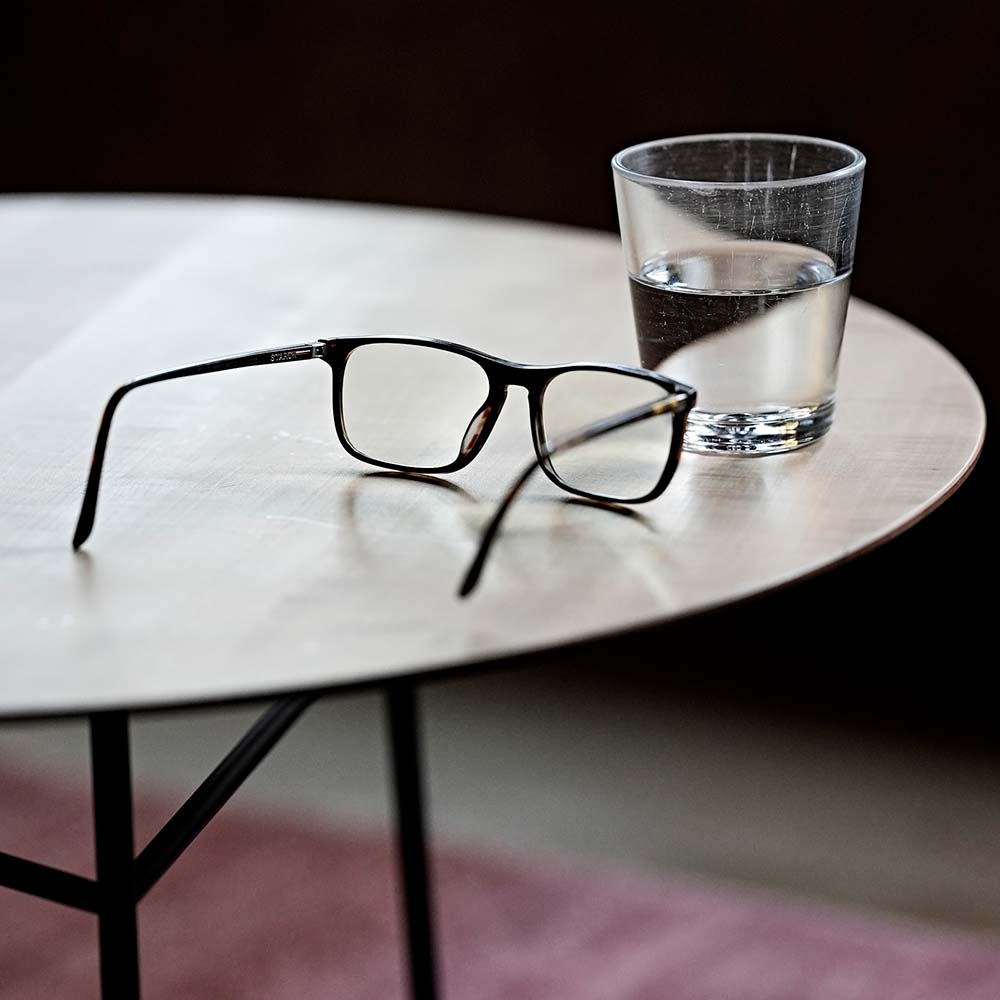
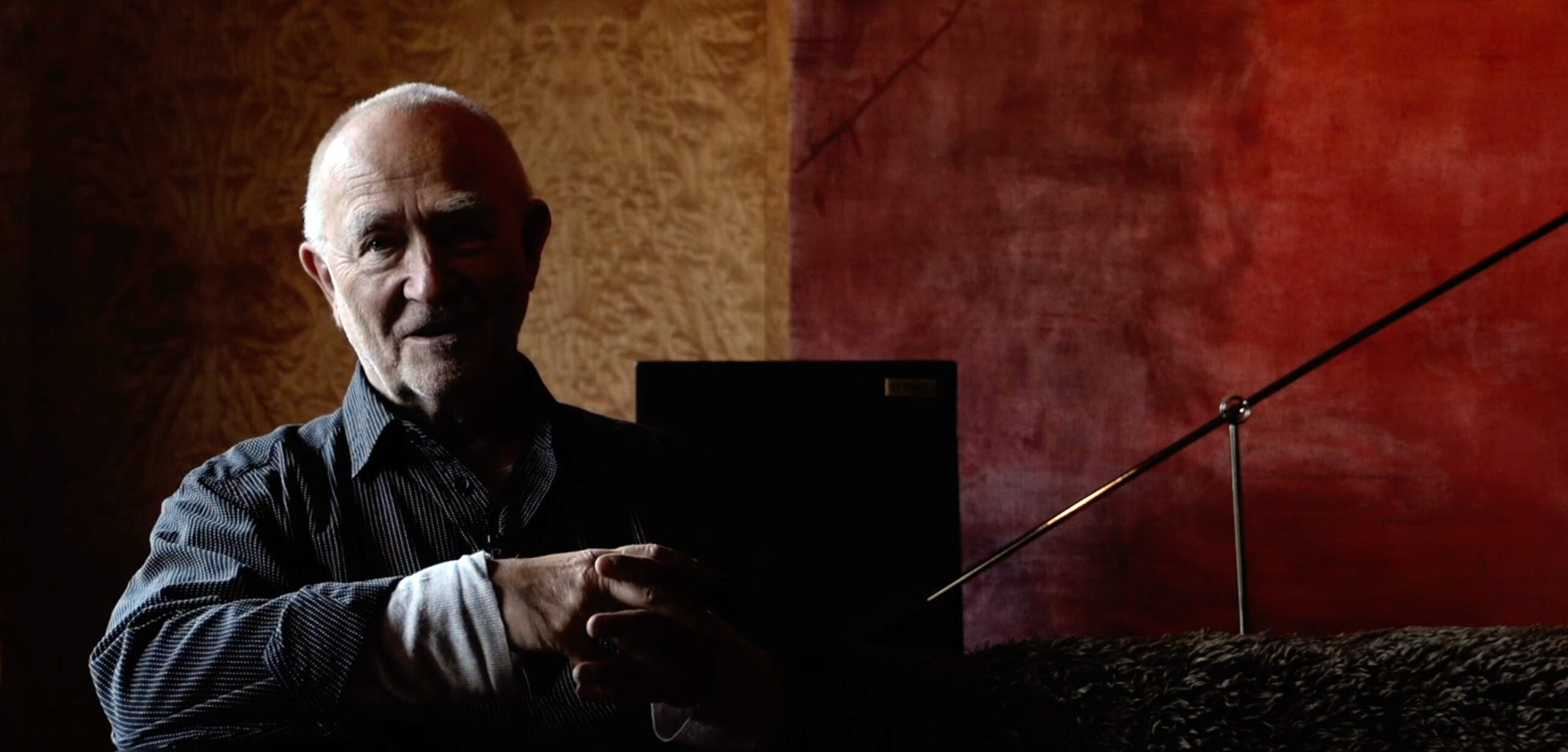
© Copyright PRESTIGE JAPAN INC. ALL rights reserved.